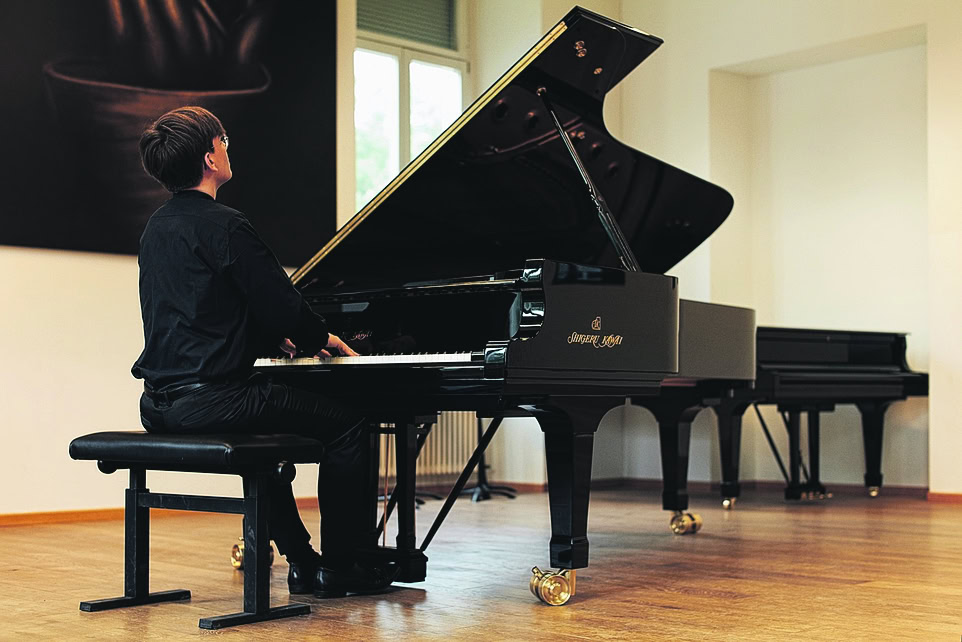Research into musicians' pain
The project "Motor Learning And Repetitive Strain Injuries In Musicians" (MoReMu), in which members of the SMM are also involved, uses an interdisciplinary approach to try to find causes and therapies for the so-called repetitive strain injury syndrome.

Depending on the study, between 40 and 75 percent of professional musicians struggle with pain in muscles, tendons and nerves, the so-called RSI syndrome (repetitive strain injury). However, there are very few detailed findings in the specialist literature on the epidemiological, biomechanical and ergonomic aspects of such ailments. The rare studies are hardly comparable or generalizable in terms of study design, methodology or the size of the groups studied. Recommendations are usually limited to references to stretching exercises and breaks.
In order to gain differentiated insights into the syndrome, teams from the Royal Conservatory in Brussels, the Accademia Vivaldi in Ticino, the Free University of Brussels and the Thim van der Laan University of Applied Sciences for Physiotherapy in Landquart, among others, have collaborated on the MoReMu (MOtor learning and REpetitive strain injuries in Musicians) project. The aim of the project is to investigate the influence of local muscular fatigue and performance stress on muscle coordination.
Among other things, ultrasound examinations, complex audiovisual observations, but also surveys on everyday life, general health, eating habits and ergonomic conditions have been carried out. Students in Brussels and Ladquarter, for example, have drawn up questionnaires as part of their Bachelor's and Master's theses, which are intended to provide meaningful information about the corresponding stresses and strains in musicians' everyday lives. The SMM recruited doctor Adrian Sury and two physiotherapists from Ticino from among its members, who took part in the study free of charge.
For the first time, spatial data on the biomechanics of instrumental playing has also been collected for MoReMu using sophisticated technical methods - combined with so-called electromyographic methods. This involves using needle electrodes to measure potential fluctuations in individual muscle activities. The role of different playing techniques, such as vibrato, spiccato or legato in the case of strings, can also be delineated in this way. The Swiss contributions to the study also include investigations into the ergonomic effects of different shoulder rests for violinists.
The interdisciplinary cooperation between different institutes and disciplines could be groundbreaking and help to develop complex, holistic strategies to prevent RSI and other health problems. The various partners in the project are concentrating on individual aspects such as exercise strategies and ergonomic considerations, but also the importance of sporting activity and nutrition in strengthening RSI-preventing music-making.
Initial methodological discussions have shown that various factors are important for the success of the studies. For example, the measurement methods must be able to register subtle variations in technical execution on the instrument. Moreover, the three-dimensional measurement of movements on the instrument has shown that it is not easy to determine which micro-movements can be assigned to which notes played. The researchers are therefore also experimenting with software instruments that have been developed for speech recognition.
The first results of a pilot study were presented at the 6th International Conference on Sport, Leisure and Ergonomics in Liverpool in 2007 and at the 3rd World Congress of Musicians' Medicine in Milan in 2008. In Switzerland, the first measurements were carried out in November 2009 and April 2010 with pupils from the Accademia Vivaldi Muralto and students from the Conservatorio di Musica di Lugano - with the approval of the Ticino Ethics Committee.
However, it has not yet been possible to achieve robust, definitive results from this pioneering project. Problems with funding, which is not secured for the continuation of the project, are currently having an inhibiting effect.








